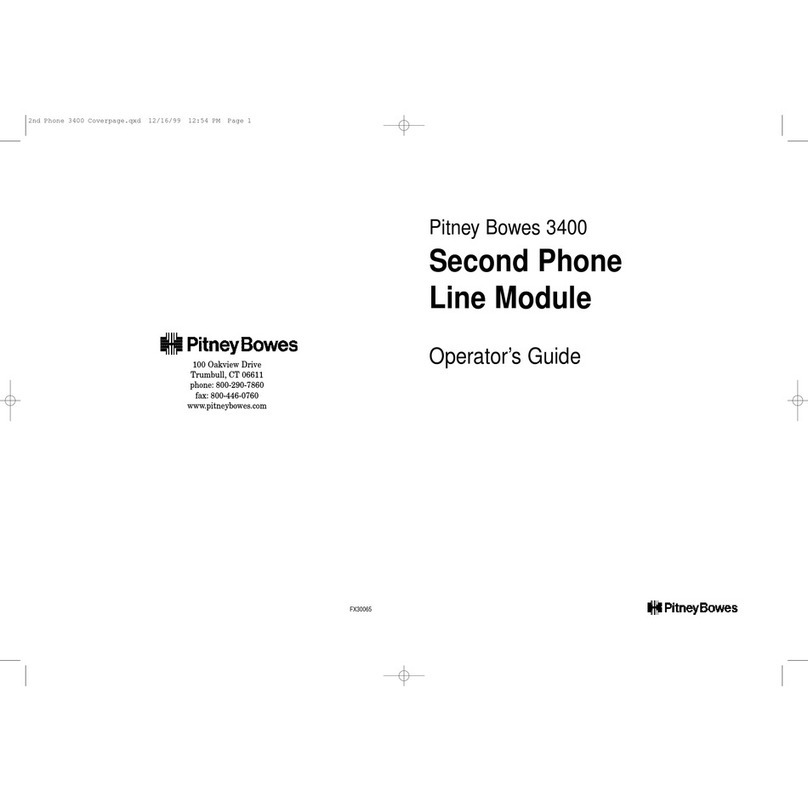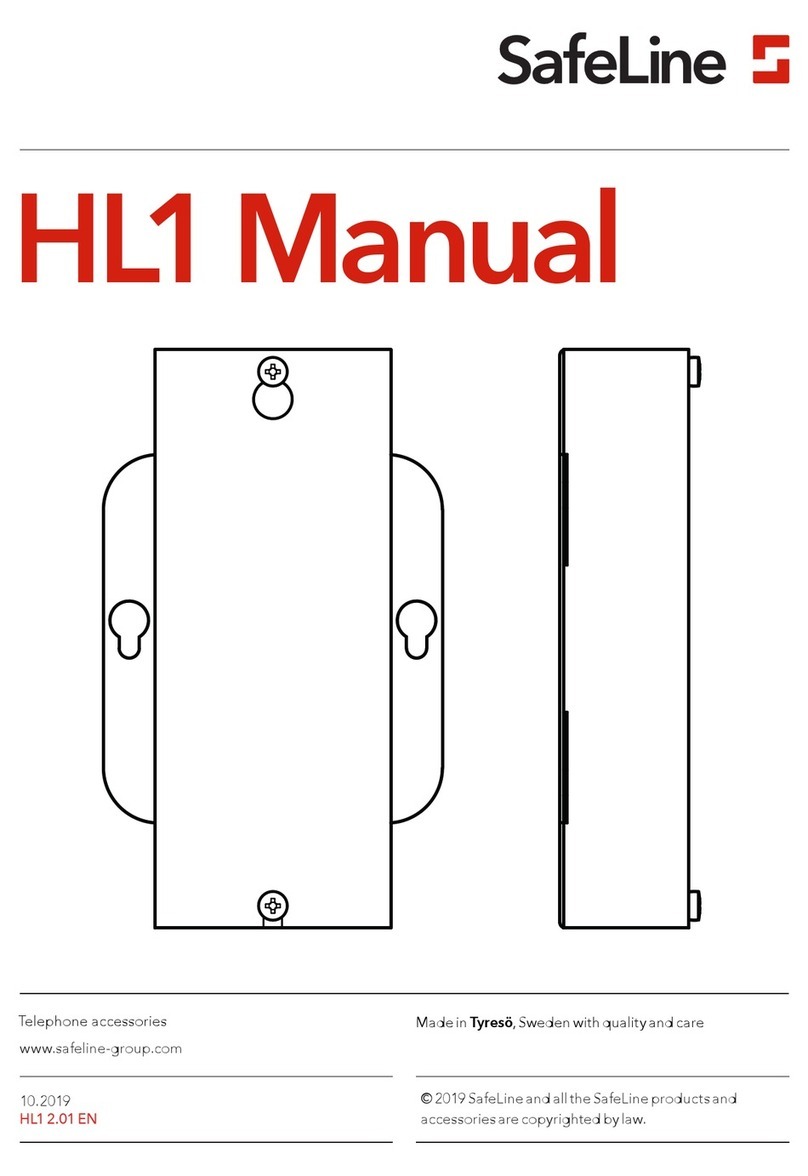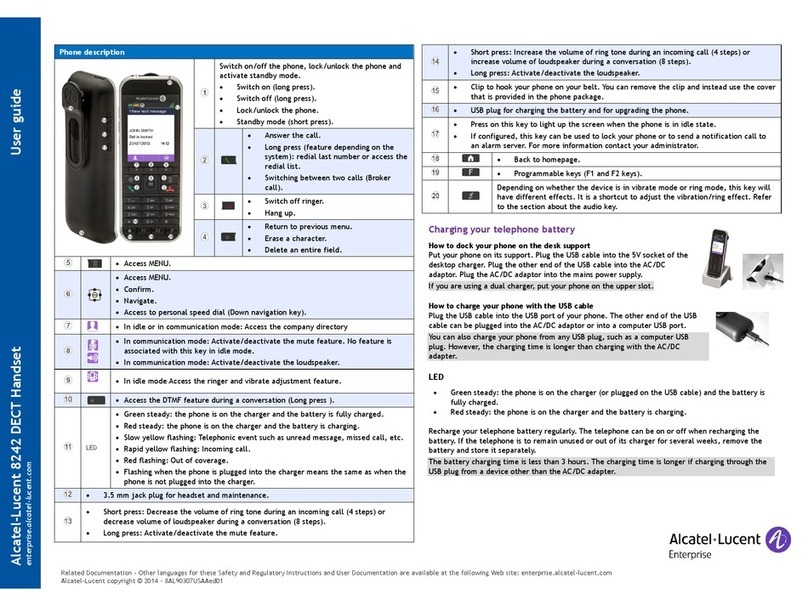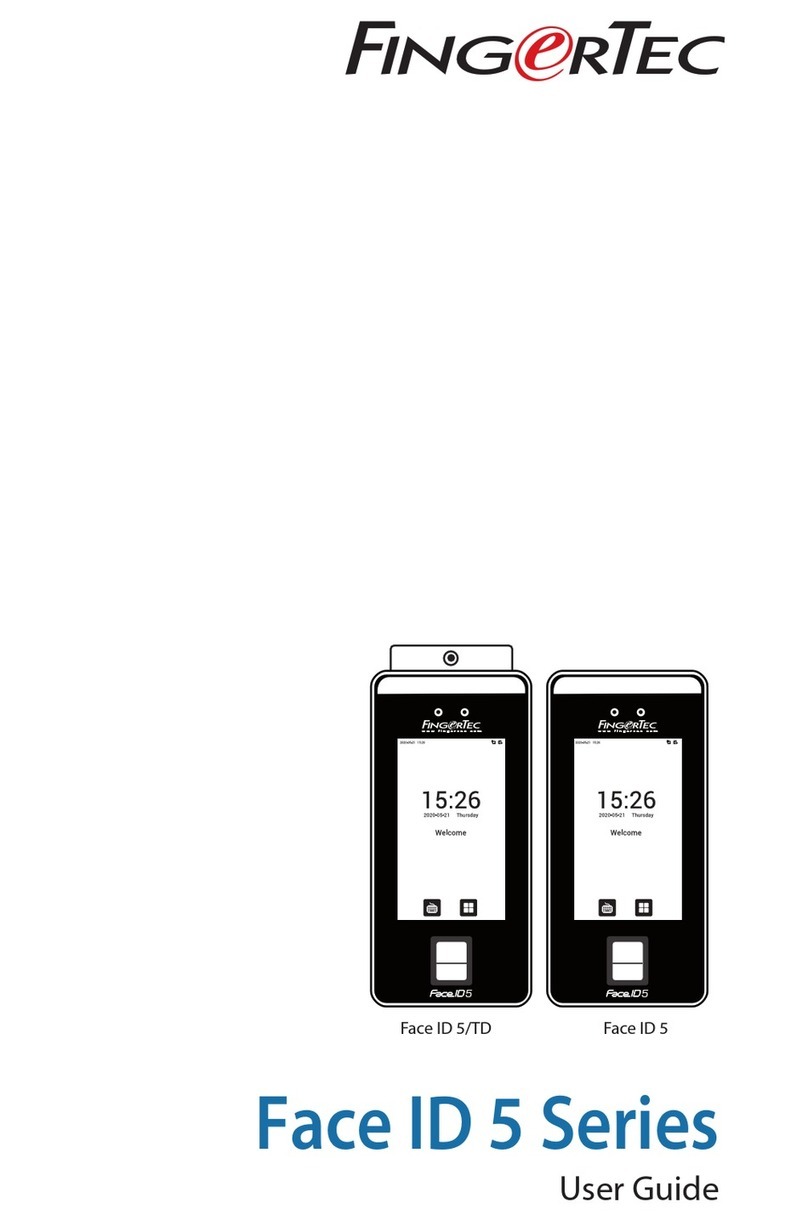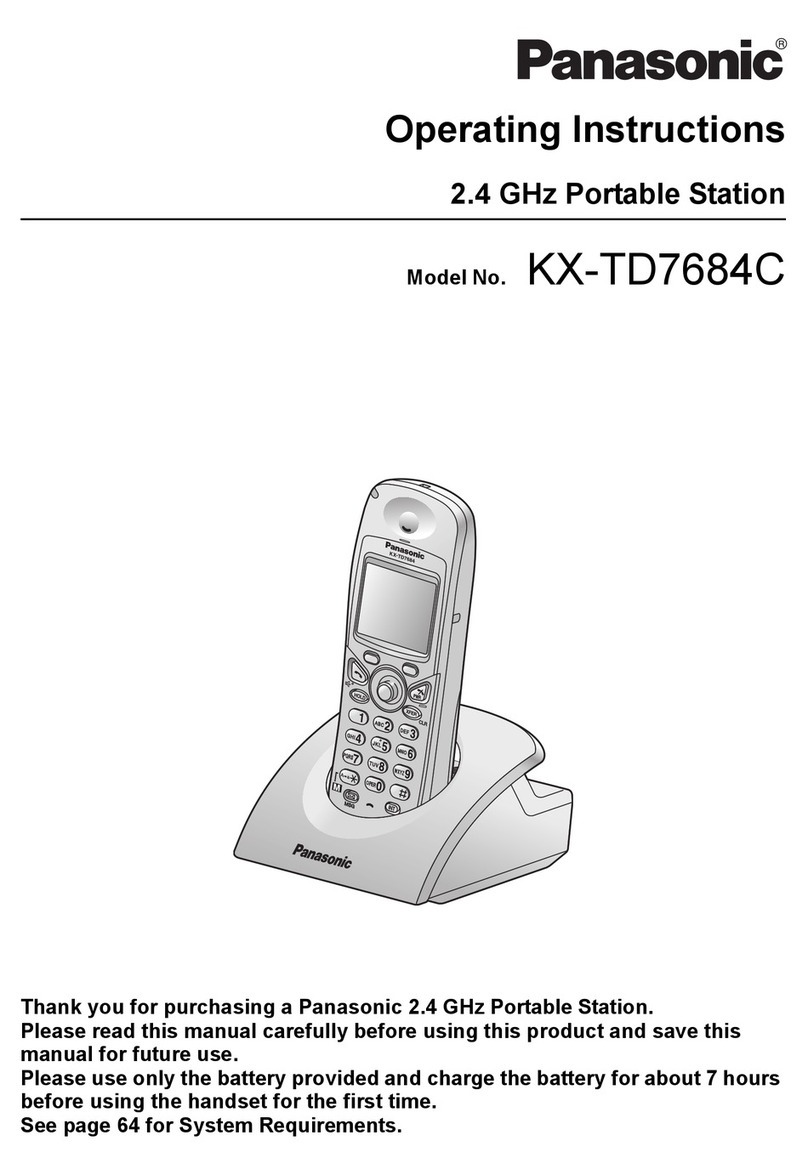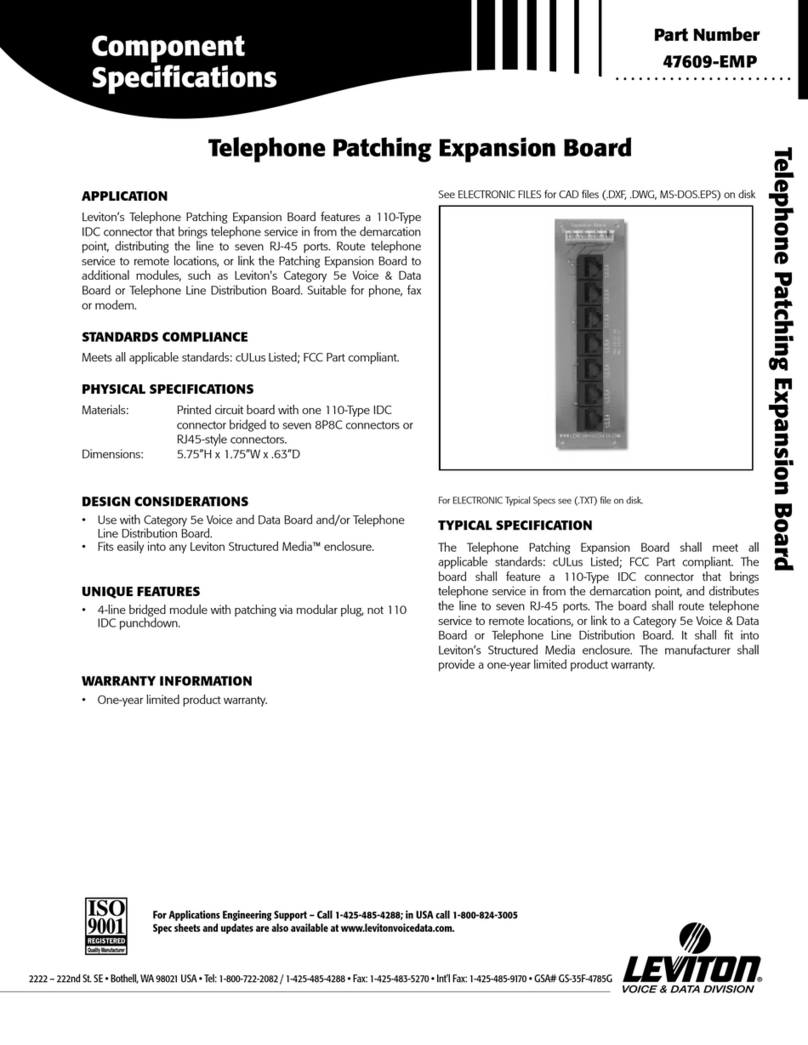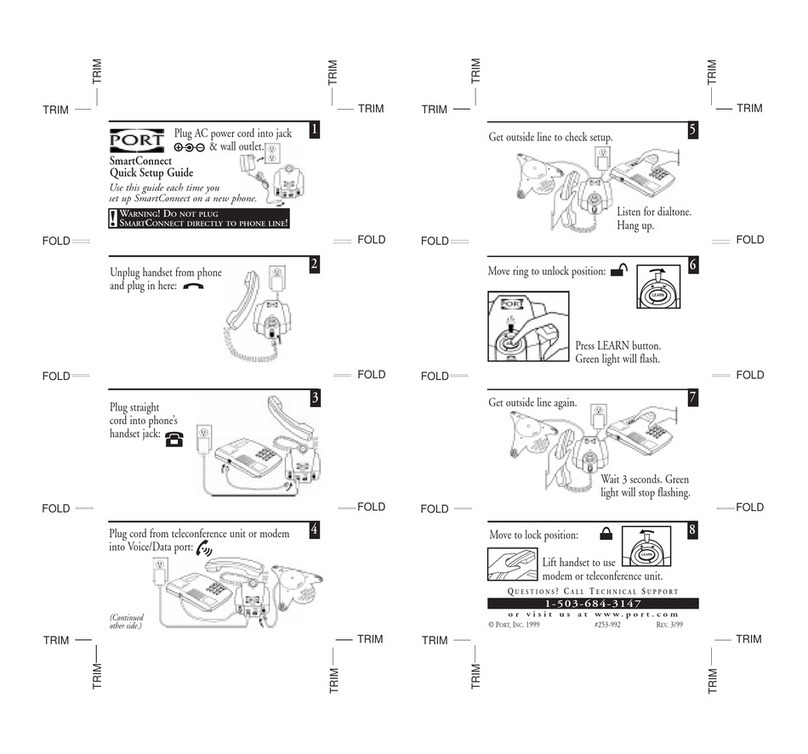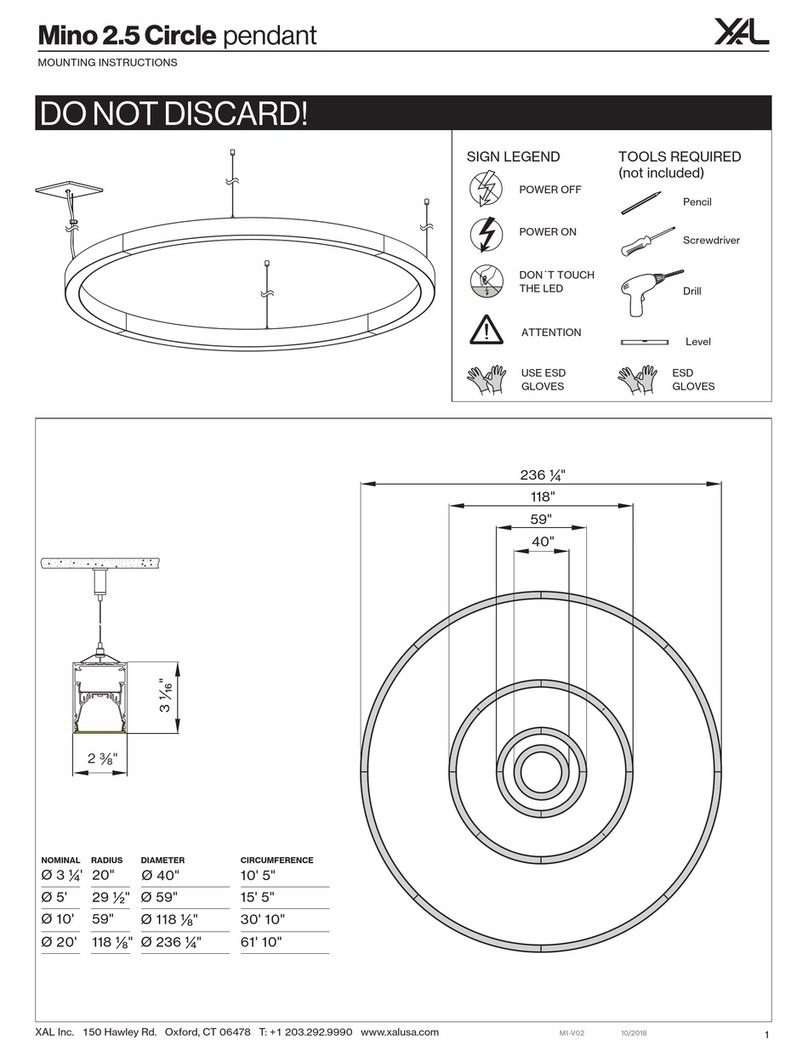Rocom ALFRED User manual

User guide ALFRED Issue 1.01
Page 1
User guide
ALFRED
Courtesy annoucement device
with up to 60" recordable
message
Automated attendant feature
Start/Stop interface
(SW 8.0 or better)

User guide ALFRED Issue 1.01
Page 2
Contents
Description ............................................................................ 3
Connection diagram ............................................................. 6
Start/Stop interface ............................................................... 7
Configuration examples ....................................................... 8
Front panel view ................................................................. 11
Rear panel view................................................................... 12
Features ............................................................................... 13
Installation .......................................................................... 14
Programming ...................................................................... 16
Activate programming mode ............................................. 16
Telephone number programming ....................................... 17
Telephone number deleting ................................................ 18
Answer delay programming ............................................... 19
Flash signal time programming .......................................... 20
Numbering plan digit number programming (automated
attendant) ....................................................................... 21
Default configuration data load ......................................... 22
Message recording.............................................................. 23
Message recording from CD, MC or mixer ......................... 24
Play back ............................................................................. 25
Technical data ..................................................................... 26
Personal notes ..................................................................... 27

User guide ALFRED Issue 1.01
Page 3
Description
ALFRED is a digital announcement device with the following features:
-Courtesy announcement
The device must be connected to a analouge PABX extension line.
This port has to be programmed on the PABX to receive, using features
like call diversion or call rerouting, all calls which can not be answered
by the attendant or other extensions. Depending on the required
function the calls can be diverted to ALFRED only if the attendant or
the extension is busy, doesn't answer within a specific time or in any
case. With small PABX were call diversion or call rerouting features
are not available the device should be programmed to receive incoming
calls at the same time as the attendant. You can program then a call
answer delay on ALFRED giving enough time to the attendant to
aswer the call if he/she is free. After answering the call the device can
send an up to 60" long message. The message can be recorded by the
user itself using the build in microphone or an external source like a
CD or MC player. At the end of the message the device will send a
flash signal, followed by an up to 16 digit long telephone number.
This will connect the answered call back to the attendant, or other
extension. Now the external call will be placed in the waiting queue
of the PABX. Using an optional MOH device like the Phonphon, the
waiting caller can now receive waiting messages with a background
music. The external music on hold source can be also connected to
ALFRED and then forwarded to the PABX MOH input as well. In this
case you will have a courtesy announcement system with the same
background music for all the duration of the process.
- Automated attendant
This feature can be activated by programmation. With this feature
activated the caller party can be invited, during the greeting message,
to dial a specific internal number using his DTMF dial pad. If the caller
will follow the instruction, the device wil stop the outgoing message
as soon as a valid DTMF digit is detected. At the end of the dial
ALFRED will transfer the call to the dialed number and not to the
stored one. The device will not survey the dialed number. Only the
number lenght is programmed in the device. This gives a high grade

User guide ALFRED Issue 1.01
Page 4
of flexibility in the possible applications of this feature. To ensure that
the external caller may not activate PABX features or external calls,
the extension line with the connected ALFRED should be restricted
using the class of service programmation of the PABX.
If the caller doesn't dial a number, or if the dialed number is shorter
then the programmed lenght, the device will forward the call the the
programmed extension at the end of the message or after a time out.
- Digital announcement device
If no telephone number is programmed, the device will work as a
digital annoucement device. After the message the connection will
be released.
- Digital announcement device with start/stop interface
Thedevicehasabuildin start/stopinterface.This interface can be used
to connectALFREDto larger PABX withthisspecificinterface(likeSie-
mens Hicom 300 or Nortel) or ACD systems.With this interface the unit
can be used also as digital announcement device for other kind of
installations (i.e.PA systems).The start/stop interface has a start input
(5 to 48Vdc), a busy signaloutputand aisolated LF signal output.Both
start/stop and t/r interface can be used at the same time, as far as for
both of it the same message is used.
- Modular expandable
Up to four units can be configurated together as one device.One of the
units is automatically indentified as master unit.All the programmation
and the recording of the message is done on the master unit.This unit
will then forward automatically the information and messages to the
connecteddevices.Inthiswayyoucan configure a multilinedevice with
the same message for all channels. After the recording and
programmation all units will work stand alone for the normal business.
The following programmations can be done on the ALFRED:
- 1 to 16 digits long telephone number (0 bis 9, *,#)

User guide ALFRED Issue 1.01
Page 5
- Delay on answer (0 to 99 calls)
- Flash signal duration (0 to 999 ms)
- Internal numbering plan lenght (1 to 16 digits)
The programmation is done using DTMF dial signals. For this procedure
ALFRED has do be called, after the programming mode has been
activated. After the answer you will receive a acknowledge tone and
the programmation can be done using a DTMF dial pad. Follow the
instructions on the following pages.
The message is stored on a EEPROM memory using the DAST
procedure. This memory is protected against loss of data due to power
failure for a period of ten years. The message can be recorded using
the build-in microphone or an external source.
The message volume can be regulated. The output inpedance is about
600 Ohm. The power supply is provided by the attached plug PSU.

User guide ALFRED Issue 1.01
Page 6
Connection diagram

User guide ALFRED Issue 1.01
Page 7
Start/Stop interface
The start/stop interface is used to connect ALFRED to larger PABX
(like Siemens, Nortel or Alcatel). Over this interface the PABX can
control the the stored message and synchronise itself with the lenght
of it. Applying a DC voltage between 5 and 48 V on the pins 12 and
13 of the DB 25 connector the message will be started. At the same
time the busy relais contact on the pins 11 and 9 will be closed (opened
on the pins 11 and 10). At the end of the stored message the busy
contact will be opened (closed) again. With the busy contact the PABX
can determine the aviability of the device for a new call. The message
is send on a 600 ohm galvanic isolated output (LF signal output on
pins 4 and 4 of the DB 25 connector). The device is delivered with a
DB 25 plug. The connection cable to the PABX has to be prepared on
the installation site.

User guide ALFRED Issue 1.01
Page 8
Configuration examples
Example 2. Courtesy announcement with no answer
- Call diversion after time is programmed for the attendand/extension.
- The call is forwarded to ALFRED only if the attendand/extension
doesn't answer.
Example 1. Courtesy announcement with busy attendant
- Call diversion on busy feature is activated for the attendant.
- If the attendand is busy the call is diverted immediatly to ALFRED.

User guide ALFRED Issue 1.01
Page 9
Incoming call
C
a
l
l
t
r
a
n
s
f
e
r
Example 3. Courtesy announcement with no answer or busy
attendant
- Attendant and ALFRED are called at the same time.
- The call will be answered by ALFRED only after a programmed delay.
Example 4. Courtesy announcement with busy operator and
automated attendant
- Call diversion on busy feature is activated for the attendant.
- If the attendant is busy the call is diverted immediatly to ALFRED.
- The waiting caller can dial during the message an internal number
using the DTMF dialpad.

User guide ALFRED Issue 1.01
Page 10
Night service
Example 6. Night message
- Alfred is programmed as night answer machine.
- The call will be answered immediatly. At the end of the message the
connection will be released.
Example 5. Automated attendant
- Alfred is programmed to receive all incoming calls.
- The caller can dial during the message an internal number using the
DTMF dialpad.
- If no number is dialed the caller will be connected to the attendant.

User guide ALFRED Issue 1.01
Page 11
Front panel view
Alfred
PROG
PROG key for the sw itch to p rogra mm ing /
recording mode . W ith multiple device configu-
rations this key is enabled only on the master
device.
REC/STOP key for the recording of the message from microphone
or external source. The key is enabled only during the recording
mode (LED is flshing orange). The record will be started at the
release of the button. Pressing the button a second time will stop
the recording and store the message..
LE D in dic ato r:
- Green flashing: stand by
- Orange flashing: prog ramming/recording function
- Re d: recordi ng
- Red flashing: 5 seconds to the end of recording time
- Green: answer mode
Volume control of the message send to the telephone line. The build in loudspeaker
doesn't have a volume control.
PLAY key for the p lay back of the reco rded message . The message will be played automati-
cally at the end of the record, and after power on.
Microphone for the registration of the message. Messages on CD or MC can also be
recorded using the connector JB on the back of the device. If this conn ector is used the
microphone will be disabled.

User guide ALFRED Issue 1.01
Page 12
Rear panel view
ONPWR RS232 JAJBJC LINE
Connector for telephone line cable
Connector for MOH output to the
PABX. (Only if an external MOH source
is connected to JA)
Connector for the external source for the reco-
rding of the message (CD, MC, Mixer, etc.). The
build in microphone is disabled if this connec-
tor is used.
Connector for the external MOH source. The exter-
nal MOH source w ill be automa tically mixed w ith
the stored message. With the connector JC the
source can be forwarded to the PABX as well.
25 pin connector for the start/stop interface and/or interconnection
cable (optional) for multiple device configuration.
Plug in for external power supply unit
on/off switch

User guide ALFRED Issue 1.01
Page 13
Features
- On site recordable message
- Build in microphone for on site message recording
- Build in loudspeaker for the play back of the recorded message
- Input for external source (i.e. CD, MC or mixer) to record the
message
- Courtesy annoucement service for quite any type of trunk and
PABX
- Up to 16 digits long programmable telephone number
- DTMF dial
- Programmable flash signal time from 0 to 999 ms
- Programmable answer delay from 0 to 99 rings
- Message output level control
- Up to 60 seconds recordable message lenght
- Programmation using DTMF dial
- Automated attendant feature (DTMF dial in during message)
- Multiple device configuration with one master and up to three
slave units
- Build in start/stop interface with busy signal
- 230 Vac power supply with external unit
- Small case
- Nice shaped case
- Fast and easy installation and programmation

User guide ALFRED Issue 1.01
Page 14
Installation
The installation place of the device should be:
- in a dry room;
- far from dirt, heat an direct sun light;
- far from device generating strong electromagnetical fields (like
loudspeaker);
- far from liquids and chemical agressiv substances.
Before you start with the installation please note:
- The device can be powered only with voltage indicated on the
identification label.
- The device doesn't contain maintanable parts and should be
opened only by instructed technicians.
- If a liquid should get into the device disconnect immediatly the
power supply. The device should be opened only by instructed
technicians.
- To polish the device use only a clean and soft cloth. To remove
spots use a umid cloth or a natural cleaning substance. Do not
use chemical substances or petrol, these might damage the
plastic of the case.
- Do not drop or shock the device.
- Static discharge may damage the device. Ensure that you
discharge yourself using a appropiate grounding before handling
the unit.
Installation
- Connect the device to a telephone plug using the line cable. The
PABX must be programmed to work together with the device. This
procedure is different from PABX to PABX. For the normal use the
extension line with the connected ALFRED should be programmed
to receive incoming calls at the same time as the attendant during
day service. Other type of programmations can use the call diversion
features of the PABX. For a best service the PABX should have the
feature "call waiting on busy extension", where an external call can
be put on a waiting queue for a busy extension by a call transfer.
- If a multiple device configuration has to be installed the units are to

User guide ALFRED Issue 1.01
Page 15
be connected together. The connection cable has to be ordered
separatly (Rocom part no. 10-5000-0010). The cable is provided for
the connection of four units. The master unit is identified
automatically by pluging in the master connector. All other devices
are identified as slave units.
- If an external music source has to be connected (i.e. CD-Player, or
Rocom Phonphon MOH Player part no. 10-1200-0000) the plug JA
has be used. The external music can be forwarded to the PABX using
the plug JC and the provided cable. After the connection of an
external music source the volume of it may be regulated for a correct
working together with the ALFRED device.
- To use the start/stop interface a special cable has to made on site.
Use the provided DB 25 plug. Refer to the schematics shown on
page 7. For a mutliple device configuration with start/stop interface,
an optional interconnect cable (Rocom part no. 10-5000-0020) has
to be ordered.
- Connect the provided power plug to the device and into the mains
plug. Switch the unit on.
- After the play back of the stored message the device is ready to
work. Herefore it has to be programmed first. To program the unit
press the button PROG. The orange LED will flash fast. Call now the
unit using a phone with DTMF dial pad. If you don't call the unit
within 30 seconds, it will automatically switch back to the stand by
mode (green LED slow flashing). In programming mode also the
message can be recorded using the build in microphone or an external
source. For the programming of the device and the recording of the
message please read the following instructions.

User guide ALFRED Issue 1.01
Page 16
Programming
To activate the programming mode
press, using a pen or a small
screwdriver the PROG button. The
orange LED will flash fast.
Using a phone with enabled DTMF dial
pad call the device using the internal
telephone number of the extension line
where the unit is connected to. The
device will answer the call the send
three short tones. The LED will be
switched off as soon as the frist DTMF
digit is recognized. After this the green
LED will go shortly on with any recieved
DTMF digit. After pressing the PROG
button you will have about 30 seconds
to call the device or to start with the
recording of the message. If this will
not happen the device will go back to
stand by mode automatically (green
LED flashing slow). In programming
mode you might hear the following
tones:
- Input is correct: three tones
- Input is wrong: six tones
- Error in the device: nine tones
The programming mode will be
terminated dialing the digit 3, or
automatically with no action within 30
seconds, or switching the unit off and
on. With a multiple device
configuration the programming and
recording is done only on the master
unit. This will then forward the
information and message to the
connected slave devices.
Alfred
PROG
Activate programming mode

User guide ALFRED Issue 1.01
Page 17
Activate the programming mode. See
also page 16.
Call the device using a telephone with
DTMF dial pad.
You here three short tones.
Dial now: * # 1
You here three short tones.
Dial now the desired telephone
number, max. 16 digits long. The DTMF
digits * and # can be used also as part
of the telephone number, but only as
first digit ond only once.
Dial at the end of the telephone
number: * *
You here three short tones.
The telephone number is stored.
You can now go ahead to program the
following steps or terminate the
programmation dial the digit 3.
Alfred
PROG
Telephone number programming
The herewith programmed telephone number will be dialed at the end of the
message after sending a flash signal. At the end of the dial the device will release
the line. If no number is stored the unit will work as an answering maschine. At
the end of the message the line will be released without dial.
PLEASE NOTE!
Some PABX can detect automatically if the telephone has a rotary dial or DTMF dial pad.
The dial mode can be detected only if the dial is started without a flash signal. To ensure
that with an Alfred connected to such a PABX the dial mode can be detected correctly the
device will send the stored number without flash every time it will be switched on. At the
first activation you should program the number and then switch the device off and on.
This will ensure that the correct dial mode is setup at the PABX and you can check the
correct stored number.

User guide ALFRED Issue 1.01
Page 18
Activate the programming mode. See
also page 16.
Call the device using a telephone with
DTMF dial pad.
You here three short tones.
Dial now: * # 6
You here three short tones.
The telephone number is deleted.
You can now go ahead to program the
following steps or terminate the
programmation dial the digit 3.
Alfred
PROG
Telephone number deleting
Without a programmed telephone number the device will work as an answer
machine. At the end of the message the line will be released. This is the default
configuration of the device.

User guide ALFRED Issue 1.01
Page 19
Activate the programming mode. See
also page 16.
Call the device using a telephone with
DTMF dial pad.
You here three short tones.
Dial now: * # 2
You here three short tones.
Dial now the number of rings 00to 99
to be waited before answering the call.
Insert the value always with two digits!
You here three short tones.
The answer delay is programmed.
You can now go ahead to program the
following steps or terminate the
programmation dial the digit 3.
Alfred
PROG
Answer delay programming
The device will wait for the programmed number of calls before answering. The
default configuration is 00 calls: no delay.

User guide ALFRED Issue 1.01
Page 20
Activate the programming mode. See
also page 16.
Call the device using a telephone with
DTMF dial pad.
You here three short tones.
Dial now: * # 3
You here three short tones.
Dial now the flash signal time in
milliseconds 000 to 999. Insert the
value always with three digits!
You here three short tones.
The flash signal time is programmed.
You can now go ahead to program the
following steps or terminate the
programmation dial the digit 3.
Alfred
PROG
Flash signal time programming
Here you can program the flash signal (recall button) time for the connected
PABX. A recall activation with ground button is not possible. The default
configuration is 80 ms.
Other Rocom Telephone Accessories manuals
Popular Telephone Accessories manuals by other brands
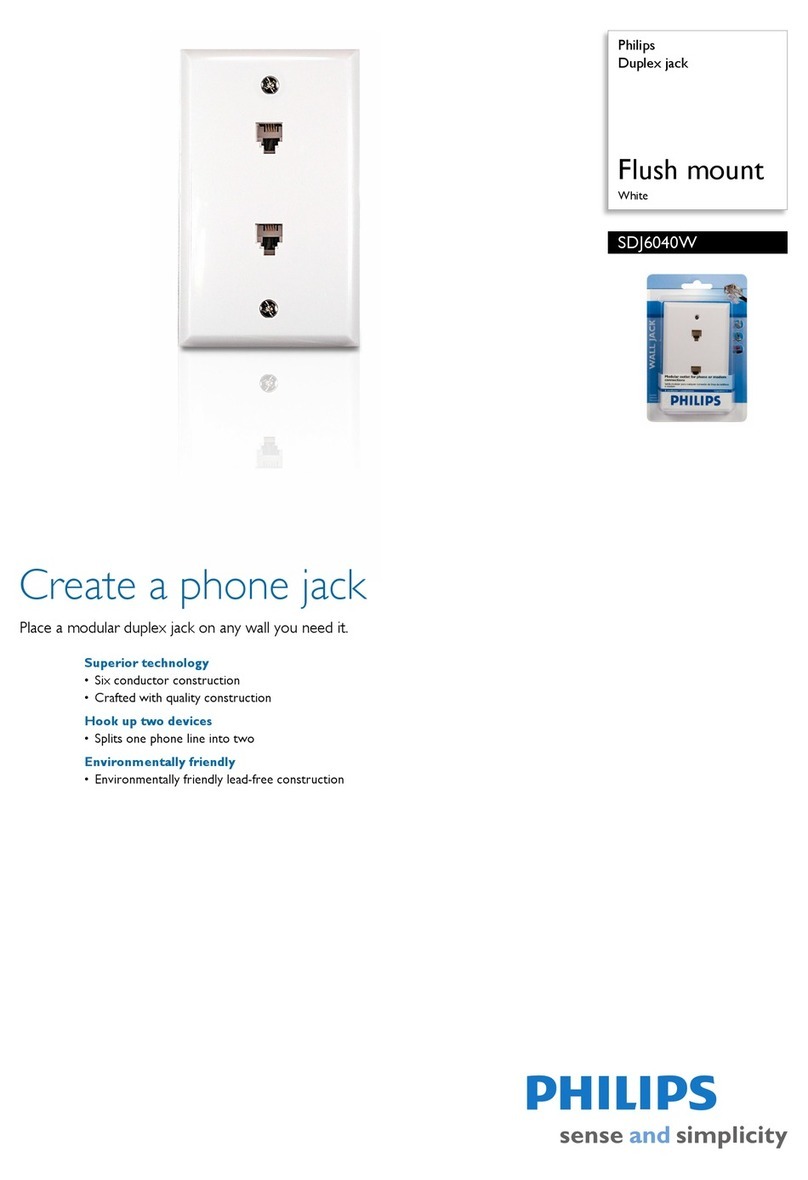
Philips
Philips SDJ6040W Specifications
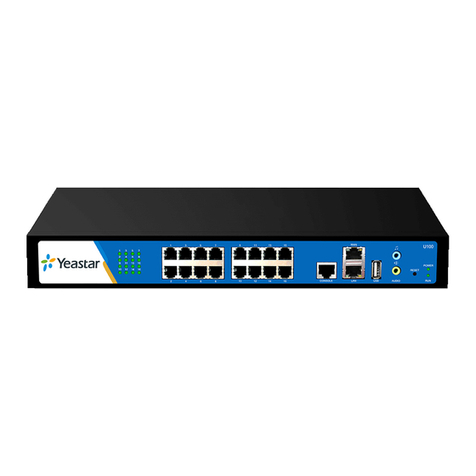
Yeastar Technology
Yeastar Technology MyPBX U100 Administrator's guide
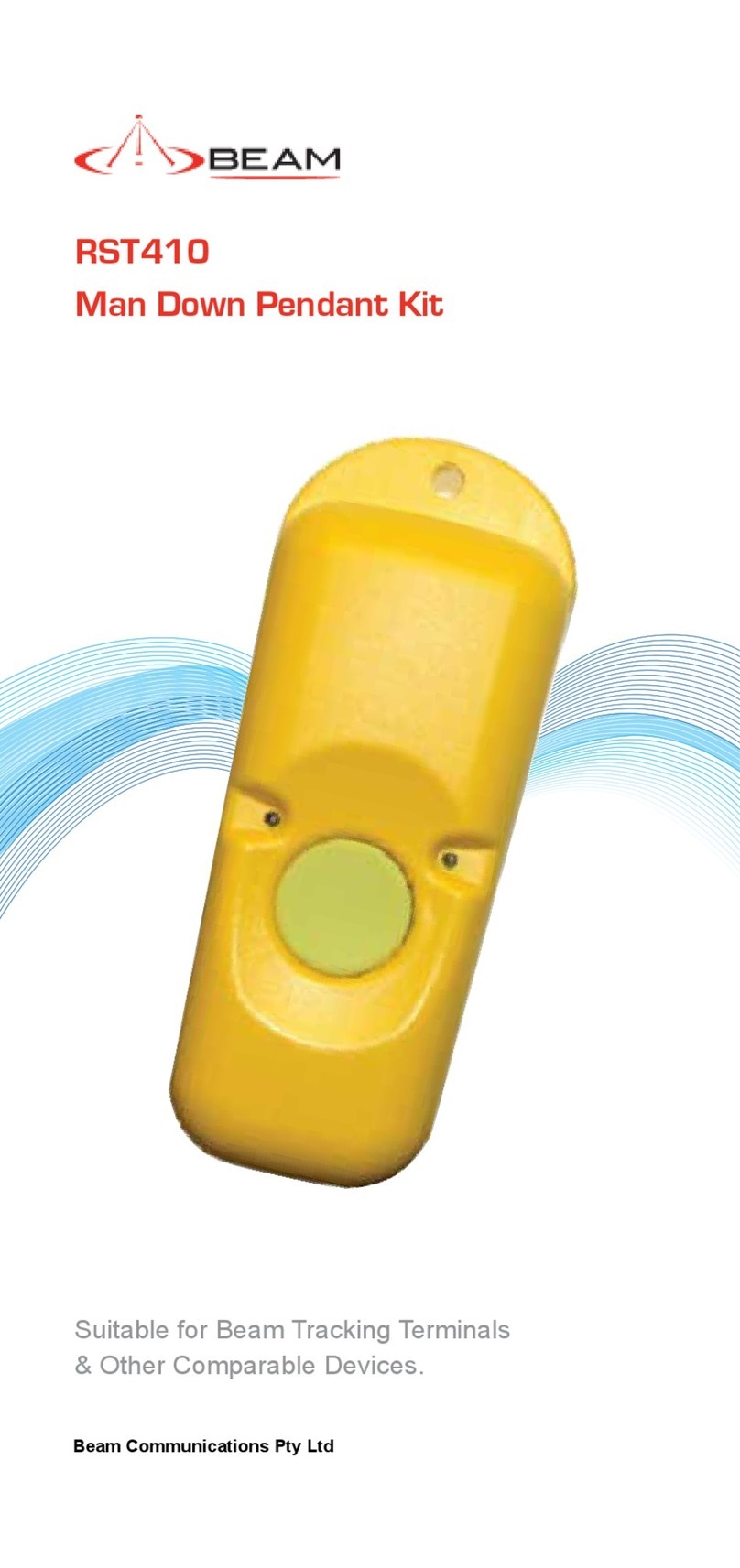
Beam
Beam Man Down RST410 Installation and user guide

Samsung
Samsung DCS COMPACT II General description
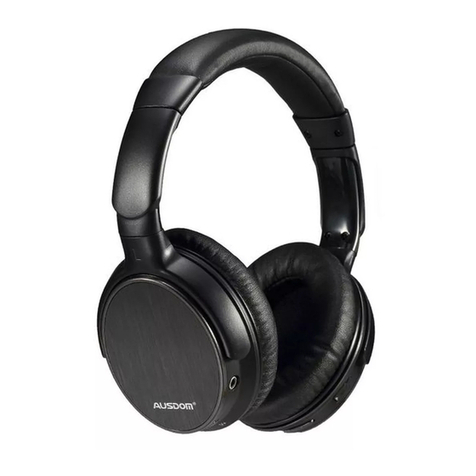
ausdom
ausdom M06 user manual
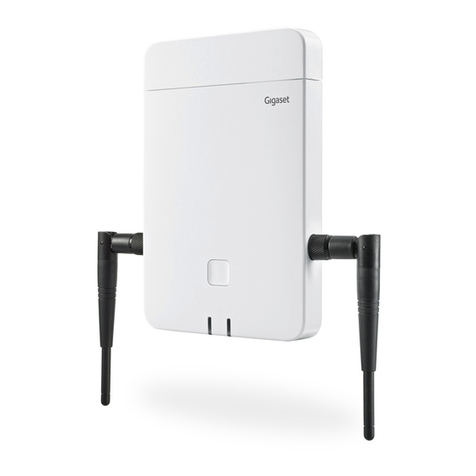
Gigaset
Gigaset N870E IP PRO Installation, configuration and operation

